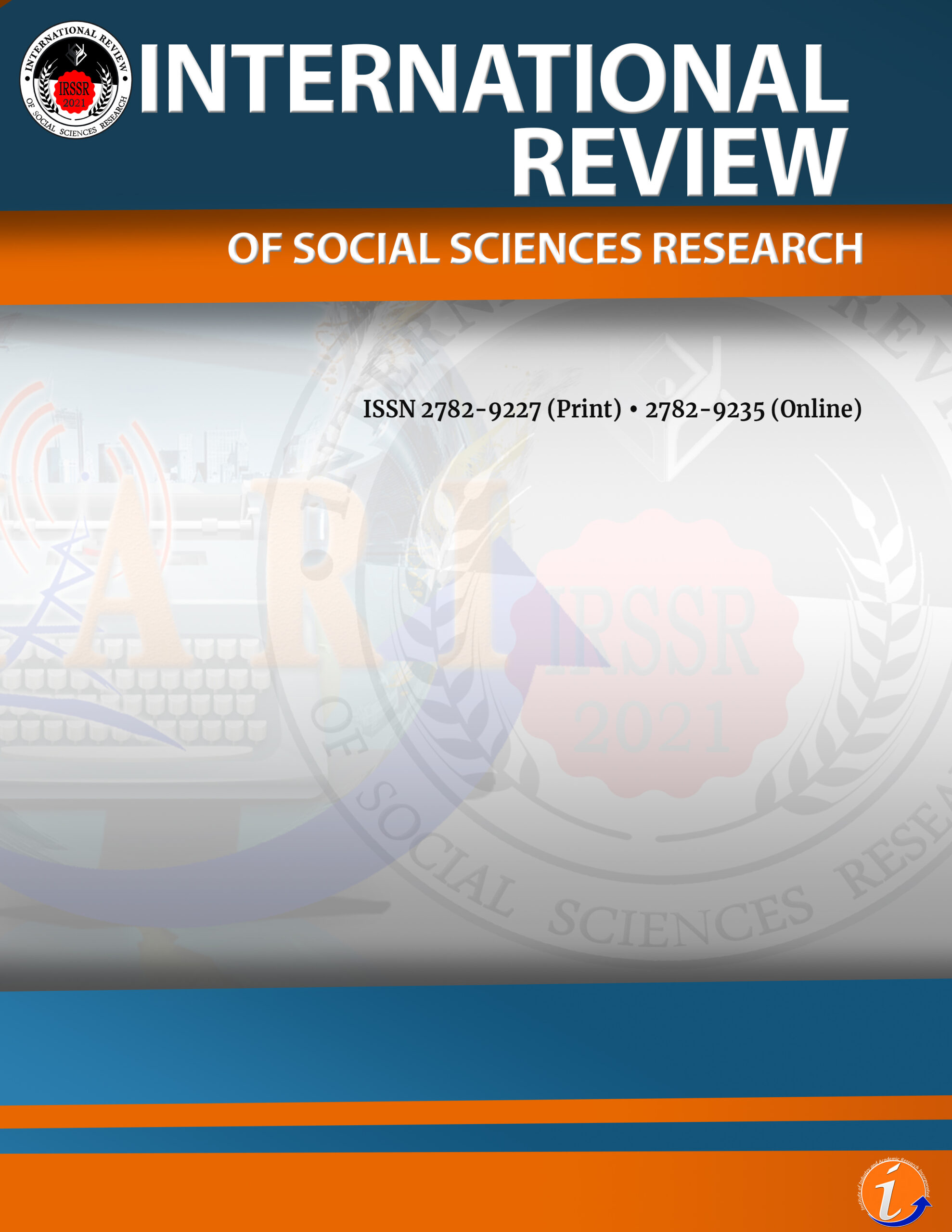The world is competitive in every possible way, especially in the education sector, so university students tend to seek success in their academic field and try to get attention within their social circle often at any cost or effort. This leads to the presence of narcissistic personalities among the university population, stemming from underlying low self-esteem and contributing to aggression. This study aimed to investigate the mediating role of narcissism in the relationship between self-esteem and aggression among university students in Sagaing. The sample comprised 1058 undergraduate students with 519 females and 539 males from undergraduate classes. Rosenberg (1965)’s self-esteem scale, the Narcissistic Personality Inventory by Raskin and Terry (1988) and the aggression questionnaire by Buss and Warren (2000) were used as the data gathering instruments. The findings revealed that self-esteem exhibits both a direct negative effect on aggression and an indirect positive effect mediated by narcissism. Interestingly, while high self-esteem typically acts as a deterrent to aggression, its mediation by narcissism can increase aggressive tendencies. This suggests a suppressor effect, termed competitive mediation, where the positive relationship between self-esteem and aggression is reversed when narcissism serves as a suppressor variable. As this suppressor effect is enticing for the researchers, further studies should explore the moderating factors in the relationship between self-esteem, narcissism and aggression. The study’s findings are expected to provide the foundational insights for the education policy makers to develop prevention programs for narcissism and aggression, promote professional development of educators, integrate curriculum components that address self-esteem, and implement counselling programs in educational settings.
self-esteem, narcissism, aggression, university students
Khin Khin Khant. Corresponding author. MEd, Educator, Modish Education Centre. Email: khinkhinkhant281@gmail.com
Wai Wai Than. MEd, Founder, Modish Education Centre.
Ahsan (2015). Physical, verbal, anger and hostility aggressiveness in university’s physical education students. International Journal of Sports and Physical Education, 1(2), 20-23.
American Psychiatric Association. (1980). Diagnostic and statistical manual of mental disorders (3rd Ed.). Washington, DC.
American Psychiatric Association. (2000). Diagnostic and statistical manual of mental disorders (4th ed., text rev.). Washington, DC.
American Psychiatric Association. (2013). Diagnostic and statistical manual of mental disorders (5th ed., text rev.). Washington, DC.
Anello, K. (2020). Reducing narcissistic aggression: Examining the effect of self-affirmation on subclinical levels of narcissism. Theses and Dissertations. 1282. https://ir.library.illinoisstate.edu/etd/1282
Anwar. M., Mahmood B. & Hanif M. K. (2016). Mental health issues in young adults of Pakistan: The relationship of narcissism and self -esteem with aggression. Journal of Behavioral Sciences, 26 (2).
Bandura, A. (1973). Aggression: A social learning analysis. Prentice-Hall.
Barnett, M.D., & Powell, H.A. (2015). Self-esteem mediates narcissism and aggression among women, but not men: A comparison of two theoretical models of narcissism among college students. Personality and Individual Differences, 89, 100–104. https://doi.org/10.1016/j.paid.2015.09.042
Barry, C. T., Doucette, H., Loflin, D. C., Rivera-Hudson, N., & Herrington, L. L. (2017). “Let me take a selfie”: Associations between self-photography, narcissism, and self-esteem. Psychology of Popular Media Culture, 6(1), 48–60. https://doi.org/10.1037/ppm0000089
Baumeister, R. F., Bushman, B. J., & Campbell, W. K. (2000). Self-esteem, narcissism, and aggression: Does violence result from low self-esteem or from threatened egotism? Current Directions in Psychological Science, 9(1), 26–29. https://doi.org/10.1111/1467-8721.00053
Baumeister, R. F., Campbell, J. D., Krueger, J. I. & Vohs, K. D. (2003). Does high self-esteem cause better performance, interpersonal success, happiness, or healthier lifestyles? Psychological Science in the Public Interest, 4(1), 1-44. https://doi.org/10.1111/1529-1006.01431
Baumeister, R. F., Smart, L. & Boden, J. M. (1996). Relation of threatened egotism to violence and aggression: the dark side of high self-esteem. Psychological Review, 103(1), 5-33. https://doi.org/10.1037/0033-295x
Bushman, B. J. & Baumeister, R. F. (1998). Threatened egotism, narcissism, self-esteem, and direct and displaced aggression: Does self-love or self-hate lead to violence? Journal of Personality and Social Psychology, 75(1), 219–229. https://doi.org/10.1037/0022-3514.75.1.219
Bushman, B. J., Baumeister, R. F., Thomaes, S., Ryu, E., Begeer, S. & West, S. G. (2009). Looking again, and harder, for a link between low self-esteem and aggression. Journal of Personality, 77(2), 427-446. https://doi.org/10.1111/j.1467-6494.2008.00553.x
Buss, A. H. & Perry, M. (1992). The aggression questionnaire. Journal of Personality and Social Psychology, 63(3). https://doi.org/10.1037/0022-3514.63.3.452.
Buss, A. H. & Warren. W. L. (2000). The Aggression Questionnaire: Manual. Western Psychological Services.
Buss, A. H. (1961). The Psychology of Aggression. New York: Wiley.
Buss, A. H. (1963). Physical aggression in relation to different frustrations. Journal of Abnormal and Social Psychology, 67(1).
Cailhol, L., Pelletier, É., Rochette, L., David, P., Villeneuve, É., Paris, J., & Lesage, A. (2017). Prevalence, mortality, and health care use among patients with cluster B personality disorders clinically diagnosed in Quebec: A provincial cohort study, 2001-2012. The Canadian Journal of Psychiatry. 62(5), 336-342. https://doi.org/10.1177/0706743717700818
Cain, N. M., Pincus, A. L. & Ansell, E. B. (2008). Narcissism at the crossroads: Phenotypic description of pathological narcissism across clinical theory, social/personality psychology, and psychiatric diagnosis. Clinical Psychology Review, 28(4), 638-656. https://doi.org/10.1016/j.cpr.2007.09.006
Campbell, W. K., Rudich, E. A. & Sedikides, C. (2002). Narcissism, self-esteem, and the positivity of self- views: Two portraits of self-love. Personality and Social Psychology Bulletin, 28(3), 358-368. https://doi.org/10.1177/0146167202286007
Cooper, C. L. (1981). Social support at work and stress management. Small Group Behaviour, 12 (3), 285-297. https://doi.org/10.1177/104649648101200304
Donnellan, M., Trzesniewski, K., Richard, R., Terrie, M. & Avshalom, C. (2005). Low self-esteem is related to aggression, antisocial behavior, and delinquency. Psychological science, 16(4), 328-35. https://doi.org/10.1111/j.0956-7976.2005.01535.x
Epstein, S. (1990). Cognitive-experiential self-theory. New York: Guilford Press.
Freud, S. (1914). On narcissism: An introduction. Yale University Press, New Haven.
Freud, S. (1931). Libidinal Types, In J. Strachey (Ed.) Collected Papers, 5, Chapter XXIII. Hogarth Press Ltd: London.
Harper, L.E. (2020). Do Narcissism levels affect conflict resolution when their ego is threatened? An experiment. Undergraduate Honors Theses. 48. https://ir.lib.uwo.ca/psychd_uht/48
Hook, T. (2007). The role of self-concept and narcissism in aggression. https://gs.statcounter.com/social-media-stats/all/myanmar/2019
Hyatt, C. S., Sleep, C. E., Sedikides, C., Campbell, W. K., & Miller, J. D. (2017). Narcissism and explicit self-esteem: A nomological network analysis. PloS one, 13(8), e0201088. https://doi.org/10.1371/journal.pone.0201088
Kernberg, O. F. (1970). Factors in the psychoanalytic treatment of narcissistic personalities. Journal of the American Psychoanalytic Association, 18(1), 51-85. https://doi.org/10.1177/000306517001800103
Kernberg, O. F. (1975). Borderline conditions and pathological narcissism. New York: Jason & Aronson.
Kernberg, O. F. (1976). Object relations theory and clinical psychoanalysis. New York: Jason & Aronson.
Kernis, M. H., Cornell, D. P., Sun, C.-r., Berry, A. & Harlow, T. (1993). There’s more to self-esteem than whether it is high or low: The importance of stability of self-esteem. Journal of Personality and Social Psychology, 65(6), 1190-204. https://doi.org/10.1037//0022-3514.65.6.1190
Kernis, M. H., Grannemann, B. D. & Barclay, L. C. (1989). Stability and level of self-esteem as predictors of anger arousal and hostility. Journal of Personality and Social Psychology, 56(6), 1013-22. https://doi.org/10.1037//0022-3514.56.6.1013
Kohut. H (1972). Thoughts on narcissism and narcissistic rage, The Psychoanalytic Study of the Child, 27 (1), 360-400. https://doi.org/10.1080/00797308.1972.11822721
Locke, K. D. (2008). Aggression, narcissism, self-esteem, and the attribution of desirable and humanistic traits to self-versus others. Journal of Research in Personality, 43(1), 99–102. https://doi.org/10.1016/j.jrp.2008.10.003
Locke, K.D. (2009). Aggression, narcissism, self-esteem, and the attribution of desirable and humanizing traits to self-versus others. Journal of Research in Personality, 43 (1), 99-102. https://doi.org/10.1016/j.jrp.2008.10.003
May, M. T. K. (2019). A study on the effects of smartphone usage on students (Case Study: Yangon University of Economics). Yangon University of Economics Master of Public Administration Programme.
Miller, J. D. & Campbell, W. K. (2008). Comparing clinical and social-personality conceptualizations of narcissism. Journal of Personality, 76(3), 449-76. https://doi.org/10.1111/j.1467-6494.2008.00492.x
Mithen, P., Briant, O. & Shaw, L. (2023). Do you really want to hurt me?: Exploring the role of Narcissism, driver comparison and ego threat in driver aggression using a conceptual definition of aggression. Transportation Research Part F: Traffic Psychology and Behaviour, 95, 450-463. https://doi.org/10.1016/j.trf.2023.05.003
Morf, C. C. & Rhodewalt, F. (2001). Unraveling the paradoxes of narcissism: A dynamic self- regulatory processing model. Psychological Inquiry, 12(4), 177–196. https://doi.org/10.1207/S15327965PLI1204_1
Ostrowsky, M. K. (2010). Are violent people more likely to have low self-esteem or high self-esteem? Aggression and Violent Behavior, 15(1), 69-75. https://doi.org/10.1016/j.avb.2009.08.004
Pincus, A. L. & Lukowitsky, M. R. (2010). Pathological narcissism and narcissistic personality disorder. Annual Review of Clinical Psychology, 6, 421-46. https://doi.org/10.1146/annurev.clinpsy.121208.131215
Raskin, R. & Terry, H. (1988). A principal-components analysis of the Narcissistic Personality Inventory and further evidence of its construct validation. Journal of Personality and Social Psychology, 54(5), 890-902. https://doi.org/10.1037//0022-3514.54.5.890
Raskin, R., Novacek, J. & Hogan, R. (1991). Narcissistic self-esteem management. Journal of Personality and Social Psychology, 60(6), 911–918. https://doi.org/10.1037/0022-3514.60.6.911
Rasmussen, K. (2015). Entitled vengeance: A meta-analysis relating narcissism to provoked aggression. Aggressive Behaviour, 42(4), 362-379. https://doi.org/10.1002/ab.21632
Rhodewalt, E. & Morf, C. C. (1995). Self and interpersonal correlates of the Narcissistic Personality Inventory: A review and new findings. Journal of Research in Personality, 29(1), 1-23. https://doi.org/10.1006/jrpe.1995.1001
Richardson, D. & Brown, L. (2003). Defining direct and indirect aggression: The Richardson Conflict Response Questionnaire. International Review of Social Psychology, 16(3), 11-30.
Rosenberg, M. (1965). Society and the adolescent self-image. Princeton, NJ: Princeton University Press.
Sedikides, C., Rudich, E. A., Gregg, A. P., Kumashiro, M. & Rusbult, C. (2004). Are normal narcissists psychologically healthy?: Self-esteem matters. Journal of Personality and Social Psychology, 87(3), 400-416. https://doi.org/10.1037/0022-3514.87.3.400
Stinson, F., Dawson, D., Goldstein, R., Chou, S., Huang, B., Smith, S., Ruan, W., Pulay, A., Saha, T., Pickering, R. & Grant, B. (2008). Prevalence, correlates, disability, and comorbidity of DSM-IV narcissistic personality disorder: Results from the Wave 2 national epidemiologic survey on alcohol and related conditions. The Journal of clinical psychiatry, 69(7), 1033–1045. https://doi.org/10.4088/jcp.v69n0701
Stucke, T. S. (2003). Who’s to blame? Narcissism and self-serving attributions following feedback. European Journal of Personality, 17(6), 465–478. https://doi.org/10.1002/per.497
Trzesniewski, K., Donnellan, M., Moffitt, T., Richard, R. & Avshalom, C. (2006). Low self-esteem during adolescence predicts poor health, criminal behavior, and limited economic prospects during adulthood. Developmental psychology, 42(2), 381-90. https://doi.org/10.1037/0012-1649.42.2.381
Twenge, J. M & Campbell, W. K. (2008). Increases in positive self-views among high school students. Birth-cohort changes in anticipated performance, self- satisfaction, self-liking, and self-competence. Psychological Science, 19 (11), 1082-6. https://doi.org/10.1111/j.1467-9280.2008.02204.x
Twenge, J. M. & Campbell, W. K. (2003). “Isn’t it fun to get the respect that we’re going to deserve?” Narcissism, social rejection, and aggression. Personality & Social Psychology Bulletin, 29(2), 261-72. https://doi.org/10.1177/0146167202239051
Twenge, J. M. & Foster, J. D. (2010). Birth cohort increases in narcissistic personality traits among American college students, 1982-2009. Social Psychological and Personality Science, 1(1), 99–106. https://doi.org/10.1177/1948550609355719
Twenge, J., Konrath, S., Foster, J., Campbell, W. K. & Bushman, B. (2008). Egos inflating over time: A cross-temporal meta-analysis of the narcissistic personality inventory. Journal of personality, 76(4), 875-902. https://doi.org/10.1111/j.1467-6494.2008.00507.x
Wiersbe, W. W. (2007). The Wiersbe Bible Commentary: Old Testament, 2nd ed. David C. C., Italy.
Wink, P. (1991). Two faces of narcissism. Journal of Personal Social Psychology, 61(4), 590–597. https://doi.org/10.1037/0022-3514.61.4.590
World Health Organization (WHO). (2002). The world health report 2002 – Reducing risks, promoting healthy life. Geneva, Switzerland.
Zeigler-Hill, V., & Besser, A. (2013). A glimpse behind the mask: Facets of narcissism and feelings of self-worth. Journal of Personality Assessment, 95(3), 249–260. https://doi.org/10.1080/00223891.2012.717150
Cite this article:
Khin Khin Khant & Wai Wai Than (2024). The mediating role of narcissism in the relationship between self-esteem and aggression of university students in Sagaing Township, Myanmar. International Review of Social Sciences Research, 4(2), 74-98. https://doi.org/10.53378/353065
License:
![]()
This work is licensed under a Creative Commons Attribution (CC BY 4.0) International License.










